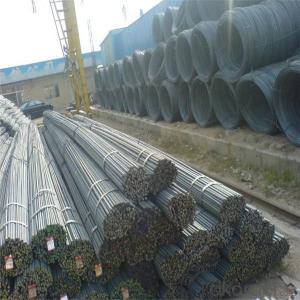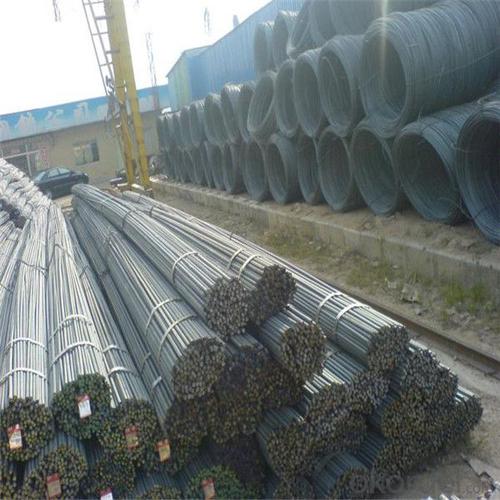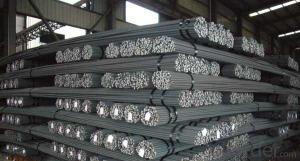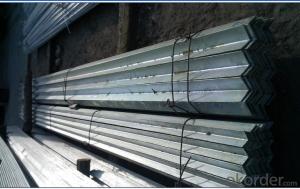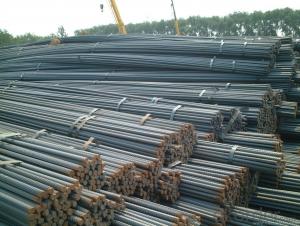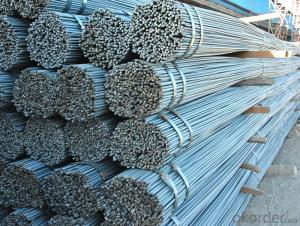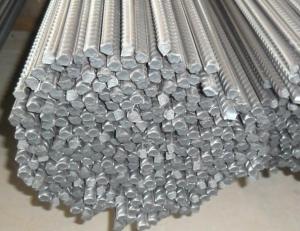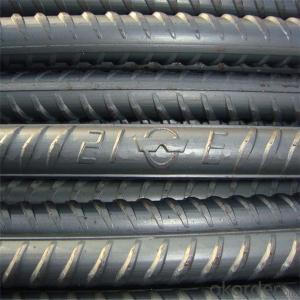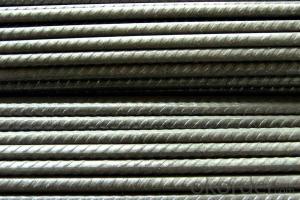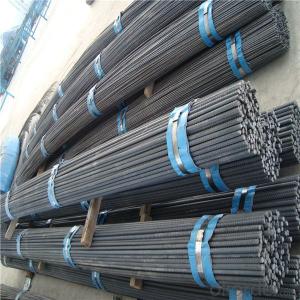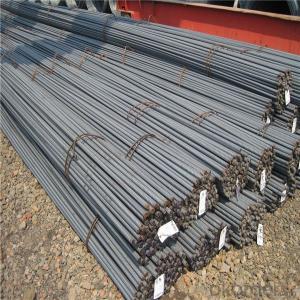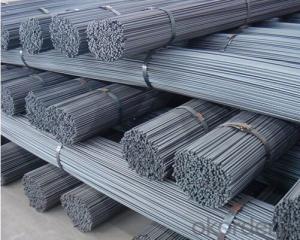Steel rebar from china 6-40MM in different grade
- Loading Port:
- Tianjin
- Payment Terms:
- TT OR LC
- Min Order Qty:
- 1000 m.t.
- Supply Capability:
- 17497 m.t./month
OKorder Service Pledge
OKorder Financial Service
You Might Also Like
Specification
Bars of steel commonly used in construction, especially for reinforcing concrete structures such as driveways,
foundations, walls, and columns. These bars come in different sizes and strength grades, and can be smooth
or may include deformations that provide greater adhesion for concrete poured over the bars. When used in poured
concrete, the bars are typically placed in a grid pattern, the concrete poured over them, and then readjusted to
maintain the proper shape while the concrete sets. Steel rebar can be purchased from a number of manufacturers
and is often found at construction retailers or large hardware stores
Most grades of steel used in rebar cannot accept welding; such as, to adjacent steel plates or as means to bind
single pieces of rebar together. However, special grades of rebar steel and welding rods make welding by expert
welders possible.
To prevent workers from accidentally impaling themselves, the protruding ends of steel rebar are often bent over or
covered with special plastic "mushroom" caps.
Product Description :
Chemical composition (%): | Steel | C | Si | Mn | P | S | Ceq | ||||
HRB335 |
0.25 |
0.80 |
1.60 |
0.045 |
0.045 | 0.52 | |||||
HRB400 | 0.54 | ||||||||||
HRB500 | 0.55 | ||||||||||
Mechanical properties | Steel | Rel/ MPa | Rm/ MPa | A/ % | Agt/ % | ||||||
≥ | |||||||||||
HRB335 | 335 | 455 | 17 |
7.5 | |||||||
HRB400 | 400 | 540 | 16 | ||||||||
HRB500 | 500 | 630 | 15 | ||||||||
Package: | Standard export packing or as customer's request | ||||||||||
Application: | Construction, building, bridge, road. ect | ||||||||||
Payment terms | 1).100% irrevocable L/C at sight. | ||||||||||
Delivery time | 15-30 days after receipt of L/C or deposit by T/T | ||||||||||
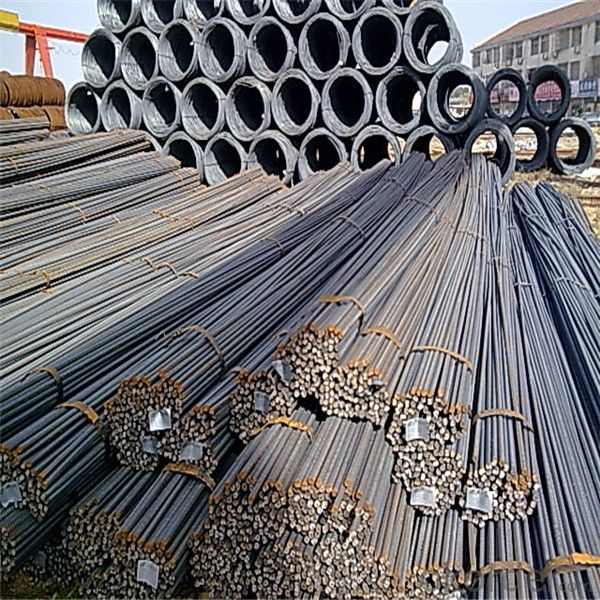
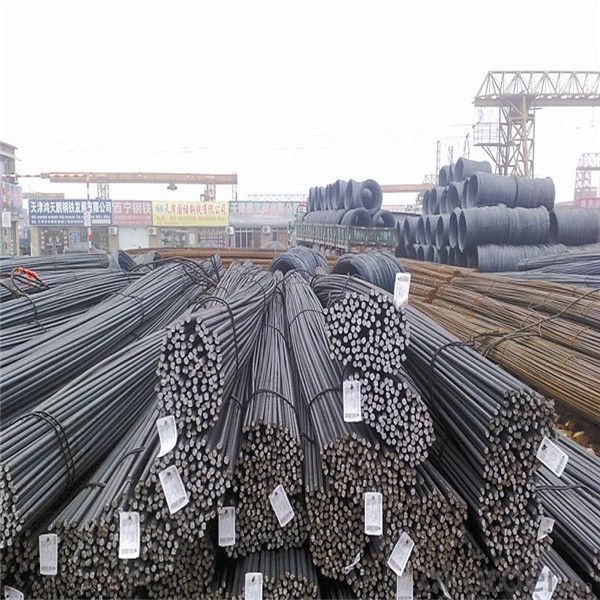
Features
1、Pure steel quality, stable chemical contents, small tolerance.
2、Constant Quality, good drawing performance.
3、High dimension accuracy degree, accuracy degree of Level C up to 80%, smooth surface, less scale, easy to be pickled.
4、Automatic bundling with 4 lines by Machine in tidy and good looks
5、Big high quality percentage, small coil percentage, and heavy coil weight for Hard Coil.
6、High sorbitizing percentage.
Packing:
In bundles, each bundle weight 3.5 tons. Load by container or by bulk verssel.
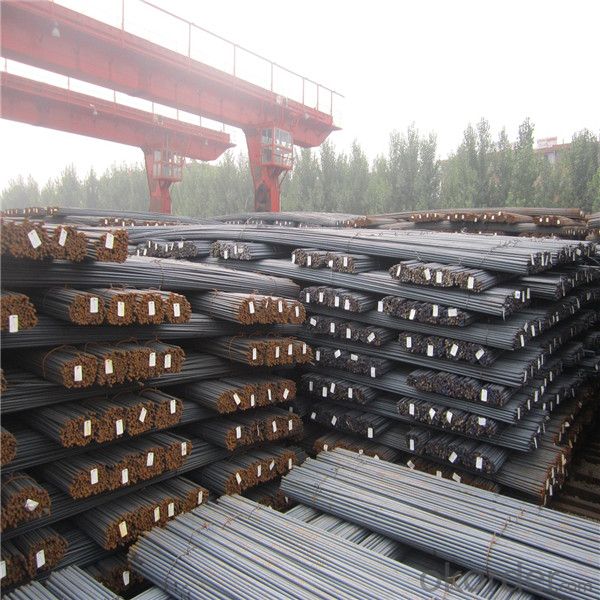

FAQ:
1.Q: What's your MOQ(minimum order quantity)?
A: One full container, mixed acceptable .
2. Q: What's your packing methods?
A: Packed in bundle or bulk ..
3. Q: How can I buy CNBM products in my country?
A:Please send us an inquiry or email ,we will reply to you if there is distributor in your country
4. Q: Can we visit your factory?
A: Warmly welcome. Once we have your schedule, we will arrange the professional sales team to follow up your case.
5. Q: How long does it take to get the product if i place an order?
A:With the process of your requirements,we will pack and deliver in 3-7 days. If it is by sea shipment,it will take 15-45 days depending on different locations
- Q: Can steel rebars be used in composite construction systems?
- Yes, steel rebars can be used in composite construction systems. Steel rebars are commonly used as reinforcement in composite structures to enhance their strength and durability. The rebars are embedded within the composite materials, such as concrete or fiber-reinforced polymers, to provide additional tensile strength and structural integrity. This combination of materials allows for a more efficient and cost-effective construction system.
- Q: How do steel rebars affect the fire resistance of concrete structures?
- Steel rebars can significantly enhance the fire resistance of concrete structures. The presence of steel rebars in concrete acts as reinforcement, providing added strength and stability to the structure. This reinforcement helps the concrete withstand the intense heat generated during a fire. The fire resistance of concrete structures is primarily due to the low thermal conductivity of concrete. When exposed to high temperatures, concrete undergoes a process called spalling, where the outer layer of the concrete breaks off due to the rapid expansion of water trapped within. However, the presence of steel rebars helps minimize spalling by holding the concrete together, preventing it from falling apart. Furthermore, steel rebars have a higher melting point compared to concrete. This means that even when exposed to extreme heat, the steel rebars retain their strength and integrity. As a result, the overall structural stability of the concrete structure is maintained, even under fire conditions. Steel rebars also act as a heat sink, absorbing and dissipating heat away from the surrounding concrete. This heat dissipation prevents localized hotspots from forming and spreading throughout the structure, minimizing the risk of structural failure. To improve the fire resistance of concrete structures further, special types of steel rebars, known as fire-resistant or fire-rated rebars, can be used. These rebars are specifically designed to withstand high temperatures for extended periods without losing their strength. They are often coated with materials such as epoxy or intumescent coatings that provide additional protection against fire. In conclusion, steel rebars play a crucial role in enhancing the fire resistance of concrete structures. Their presence improves the overall structural stability, minimizes spalling, dissipates heat, and provides added strength to withstand the intense heat generated during a fire.
- Q: What are the different methods of reinforcing concrete structures using steel rebars?
- Steel rebars can be used in several ways to reinforce concrete structures. The first method is called traditional reinforcement. This involves placing the rebars in the formwork before pouring the concrete. They are positioned in a specific pattern and secured with wire or tie rods to ensure they stay in place. This method is commonly used for reinforcing columns, beams, and slabs. Another method is pre-stressed reinforcement. This involves pre-stressing the high-strength rebars before placing them in the concrete structure. The rebars are stretched and anchored to resist the tensile forces on the structure. This method is commonly used in bridges and large-span structures that require high strength and durability. Post-tensioning is a technique used to reinforce concrete structures after the concrete has hardened. Steel tendons are inserted into pre-determined ducts or sleeves within the concrete and tension is applied using hydraulic jacks. This helps counteract the tensile forces and increase the strength and load-carrying capacity of the structure. Instead of using traditional steel rebars, fiber reinforcement involves adding small fibers made of materials like glass, polypropylene, or steel to the concrete mix. These fibers help distribute and control cracks caused by shrinkage or thermal expansion. Fiber reinforcement is often used in industrial flooring, shotcrete, and precast concrete products. Reinforced concrete masonry is another method where steel rebars are inserted into the mortar joints of concrete masonry units (CMUs). The rebars are placed vertically and horizontally at specific intervals and then grouted to ensure a solid bond between the rebars and the CMUs. In summary, these different methods of reinforcing concrete structures using steel rebars provide engineers and designers with various options to enhance strength, durability, and load-carrying capacity based on project requirements.
- Q: How do steel rebars affect the overall cost of maintenance?
- Steel rebars can significantly impact the overall cost of maintenance. By utilizing high-quality steel rebars in construction projects, the durability and strength of structures are enhanced, leading to reduced maintenance needs in the long run. The use of corrosion-resistant rebars can also prevent deterioration caused by environmental factors, lowering maintenance expenses. Conversely, using low-quality or substandard rebars may result in structural issues and increased maintenance costs over time.
- Q: How do steel rebars improve the ductility of a structure?
- By reinforcing and resisting tension forces, steel rebars enhance the ductility of a structure. When external loads, like earthquakes or strong winds, are applied to a structure, it undergoes tensile stresses, which can result in cracking and failure. However, the inclusion of steel rebars, typically composed of high-strength steel, in concrete structures improves their capacity to withstand and distribute these forces. The presence of rebars in the concrete boosts its tensile strength, enabling it to withstand deformation and cracking. When the structure faces tension, the rebars bear the majority of the load, preventing the concrete from collapsing. This redistribution of forces leads to increased ductility, which refers to a material's ability to undergo deformation without breaking. Moreover, steel rebars also fortify the structural integrity of a building by hindering the propagation of cracks. As the concrete cracks under tension, the rebars act as a barrier, confining the growth of these cracks and preventing them from spreading throughout the structure. This containment of cracks enhances the overall resilience of the building, minimizing the risk of catastrophic failure. In conclusion, steel rebars are vital in enhancing the ductility of a structure by improving tensile strength, redistributing forces, and limiting crack propagation. By incorporating rebars into concrete, engineers can design and construct structures capable of withstanding various external forces, assuring the safety and longevity of the building.
- Q: Is cold-rolled ribbed steel bar thread steel?
- Which is divided into cold rolled ribbed steel and hot rolled ribbed bar. Usually called hot rolled ribbed steel hot rolling thread steel or steel
- Q: What is the difference between deformed and plain steel rebars?
- Deformed steel rebars have ribs, lugs, or projections on their surface, which provide better bonding with concrete and enhance their overall strength and durability. On the other hand, plain steel rebars have a smooth surface without any additional features.
- Q: What grade of reinforcement is used for cast-in-place floorslab?
- Now the more commonly used high-rise buildings are cast-in-place floorslab.The floor slab, of course, separates the floor and bears and transmits the floor load. At the same time, heat insulation, sound insulation, waterproof and so on.
- Q: Can steel rebars be used in underground construction projects?
- Indeed, steel rebars have the ability to be utilized in underground construction endeavors. In fact, rebars are commonly employed in a wide array of construction projects, including those involving subterranean structures. The primary purpose of steel rebars is to fortify concrete and furnish the structure with added strength and stability. In underground construction specifically, rebars are frequently employed in the creation of foundations, walls, and columns to fortify the concrete and guarantee the integrity of the structure. By incorporating steel rebars into underground construction projects, the load-bearing capacity of the concrete is significantly enhanced, rendering it more impervious to the pressure and forces exerted by the surrounding soil and groundwater. Furthermore, steel rebars possess exceptional durability and corrosion resistance, thus rendering them appropriate for subterranean environments where they may be exposed to moisture and other potentially harmful elements. In sum, the inclusion of steel rebars in underground construction endeavors is absolutely vital in order to ensure the structural stability and longevity of these below-ground structures.
- Q: How do steel rebars contribute to the overall ductility of a structure?
- Steel rebars contribute to the overall ductility of a structure by providing reinforcement and enhancing its ability to withstand deformations and absorb energy without failure. The addition of rebars in concrete structures improves its tensile strength, as concrete alone is weak in tension. This combination allows the structure to flex and bend under loading, reducing the risk of brittle failure and increasing its overall resilience.
Send your message to us
Steel rebar from china 6-40MM in different grade
- Loading Port:
- Tianjin
- Payment Terms:
- TT OR LC
- Min Order Qty:
- 1000 m.t.
- Supply Capability:
- 17497 m.t./month
OKorder Service Pledge
OKorder Financial Service
Similar products
Hot products
Hot Searches
Related keywords
